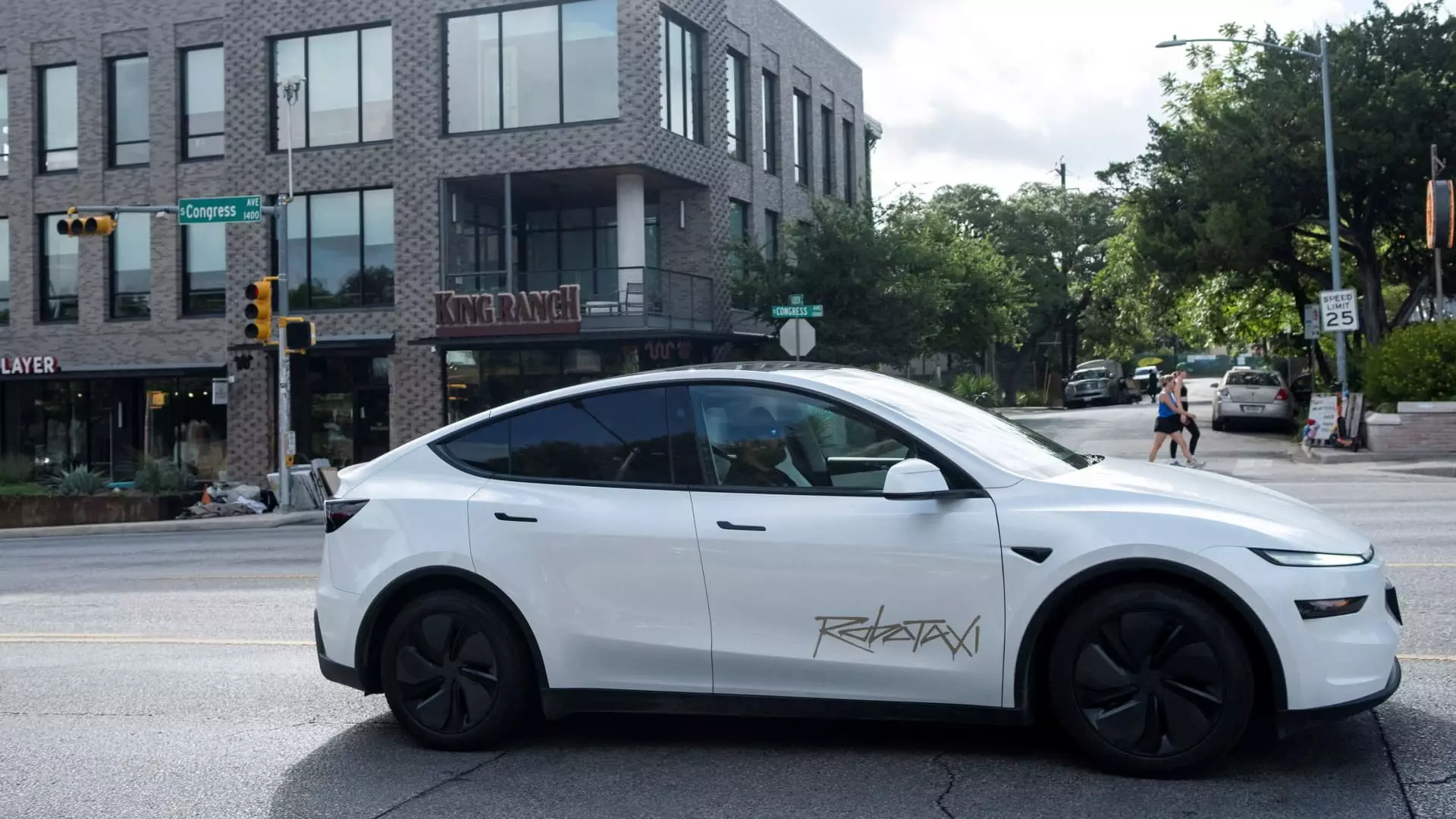The automotive industry is currently experiencing a seismic shift towards electrification and automation, with Elon Musk’s Tesla at the forefront of this revolution. However, the recent incidents involving Tesla’s robotaxi service in Austin, Texas, raise significant concerns about the readiness of this technology for public use. As Tesla rolls out its ambitious autonomous vehicle program, a slew of reports depicting erratic behavior from the vehicle’s software has placed necessary scrutiny on the company’s practices and ambitions.
The Problematic Rollout of Robotaxis
The debut of Tesla’s robotaxi service, which operates with its latest Full Self-Driving (FSD) software, came with much fanfare, albeit for a select group of invited users. According to videos circulating on social media, some of these robotaxis displayed frighteningly improper behavior on public streets, including driving the wrong way and executing sudden stops that jeopardized passenger safety. Such erratic responses to mundane obstacles, like stationary police vehicles, depict a glaring lack of reliability and raise legitimate concerns about public safety. Given these early trials, one must question whether unleashing such a technology is wise at this stage.
Tesla’s reliance on a customer base primarily composed of enthusiastic promoters rather than unbiased testers reflects an unsettling trend. The company is effectively curating its feedback, a practice that is not only deceptive but also poses severe risks for broader public adoption. Shouldn’t we prioritize public safety over stock market gains? The recent surge in Tesla’s share price tied to this event—an 8% increase—is a clear indicator that market speculation is triumphing over genuine concerns regarding consumer safety and technology regulation.
Historical Promises Versus Current Reality
Musk has a history of over-promising and under-delivering. He famously assured stakeholders that Tesla vehicles would achieve complete autonomy by 2018—a deadline that, much like many others he has set, came and went without the promised technological advancements. The 1 million robotaxi-ready fleet Musk touted for 2020, intended to generate revenue for owners, remains nothing more than a mirage. While other companies such as Waymo report successful commercial usage, Tesla’s vision appears increasingly untenable.
The stark contrast between Musk’s promises and the operational reality of these robotaxis cannot be ignored. In a world where Alphabet’s Waymo has managed to surpass 10 million paid trips, Tesla’s fleet—entangled in a cycle of regulatory scrutiny and public apprehension—resembles a rudderless vessel lost at sea. There’s an undeniable irony in how Tesla positions itself as an innovator while failing to keep pace with industry standards.
Regulatory Oversight or Lax Scrutiny?
The role of the National Highway Traffic Safety Administration (NHTSA) cannot be understated. Their recent communication with Tesla concerning the erratic robotaxi incidents raises urgent questions about the adequacy of regulatory frameworks surrounding autonomous vehicles. NHTSA’s claim that it does not pre-approve technologies could be interpreted as an invitation for manufacturers like Tesla to circumvent necessary safety checks. In a rapidly evolving landscape, the need for robust oversight is paramount—unless we want to see more chaotic episodes that endanger all road users.
The ongoing investigations into Tesla’s FSD technology underscore the gravity of the situation. As the agency attempts to sift through reports highlighting potential safety flaws, one can’t help but wonder if the current regulatory environment is adequately equipped to handle the challenges posed by autonomous driving. With a history of incidents involving Tesla technology, the question looms—are we witnessing a failure of oversight, or is Tesla manipulating the freedom granted to them before sufficient safeguards have been established?
As we grapple with the implications of autonomous technology, the Tesla robotaxi saga serves as a cautionary tale. It brings forth the broader debate surrounding innovation versus responsibility. While enthusiasm for electric vehicles and automation is palpable, it is imperative that we temper our expectations with an understanding of the technology’s limitations. For the industry players promising revolutionary changes, accountability should not be optional; it must be woven into the fabric of their operations.
The future of mobility should not merely revolve around the aspiration to lead the market; it should primarily prioritize the fundamental principle of safety for all—and this is something Tesla must address immediately in light of recent events.

